Abstract
OBJECTIVE: To measure the effect of body weight on employment disability. DATA SOURCES: Female respondents to the National Longitudinal Survey of Youth (NLSY), a nationally representative sample of American youth, surveyed from 1979 to 1998, merged with data from the child sample of the NLSY. STUDY DESIGN: A series of probit models and probit models with instrumental variables is estimated with the goal of measuring the effect of body weight on employment disability. The two outcomes of interest are whether a woman reports that her health limits the amount of work that she can do for pay, and whether she reports that her health limits the kind of work that she can do for pay. The models control for factors that affect the probability of health limitations on employment, such as education, cognitive ability, income of other family members, and characteristics of children in the household. Self-reports of height and weight are corrected for reporting error. PRINCIPAL FINDINGS: All else being equal, heavier women are more likely to report employment disability. However, this overall correlation may be due to any or all of the following factors: weight causing disability, disability causing weight gain, or unobserved factors causing both. Instrumental variables estimates provide no evidence that body weight affects the probability of either type of employment disability. CONCLUSIONS: This study finds no evidence that body weight causes employment disability. Instead, the observed correlation between heaviness and disability may be due to disability causing weight gain or unobservable factors causing both disability and weight gain.
Full text
PDF
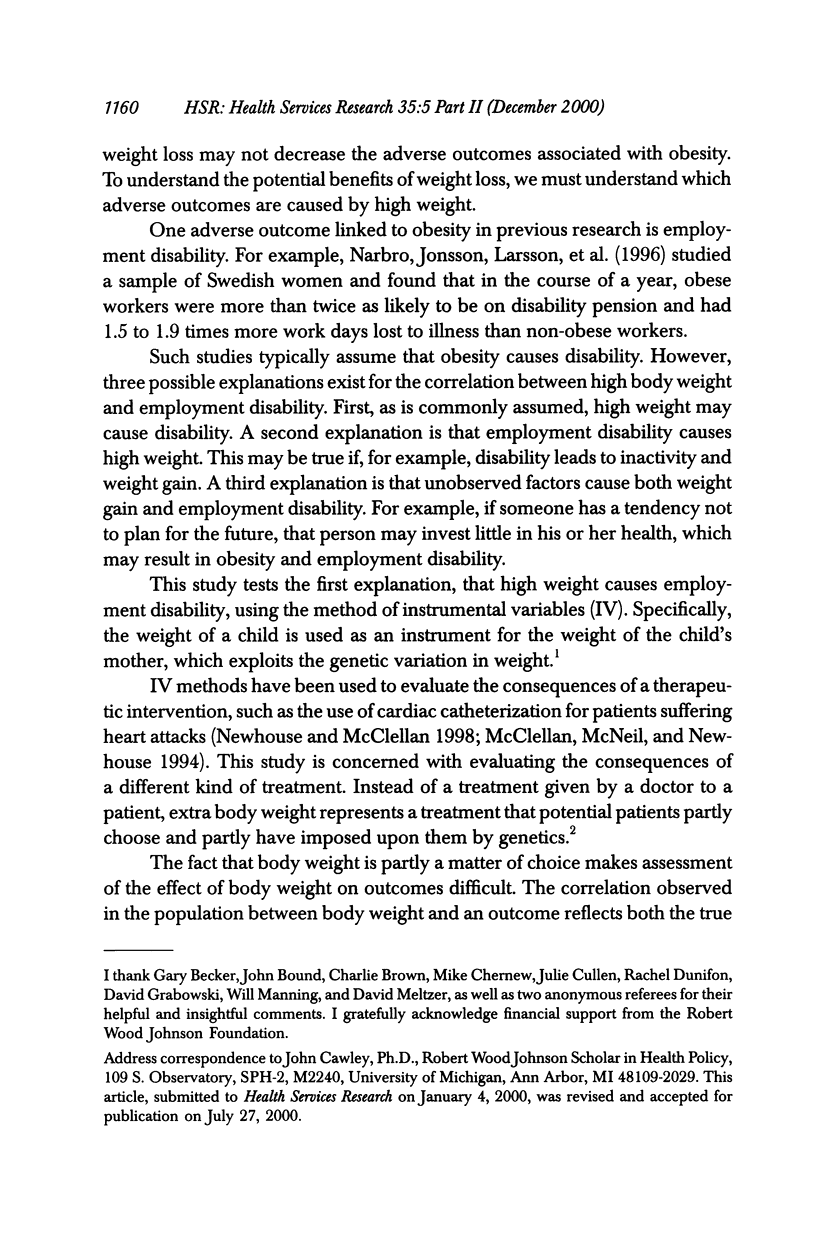



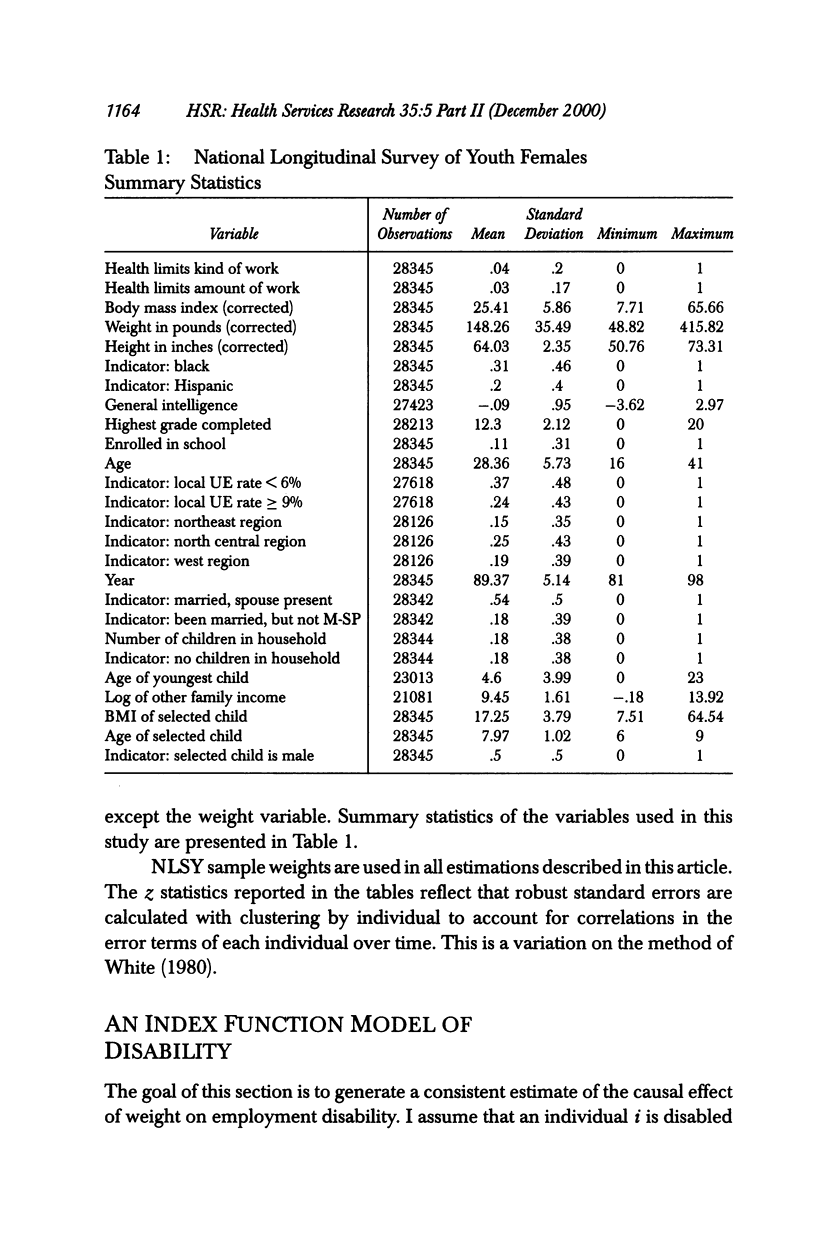
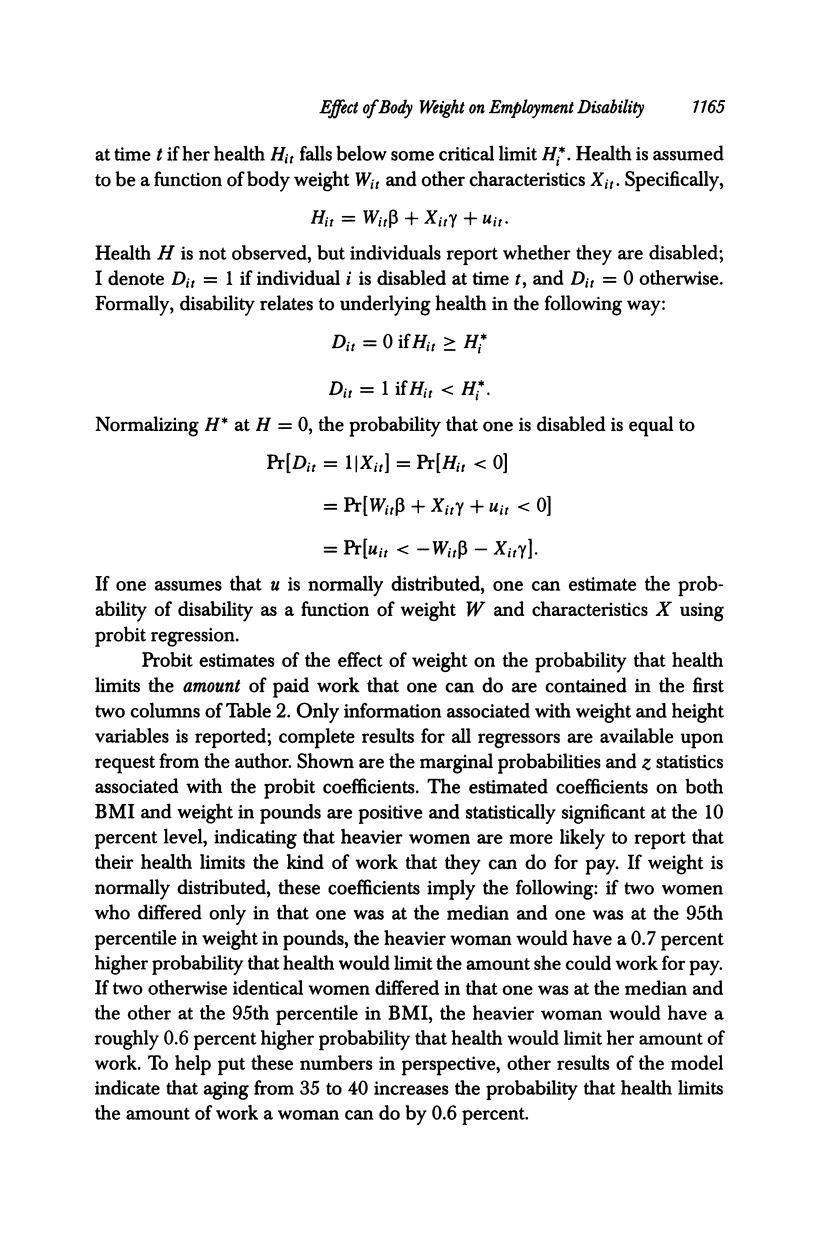
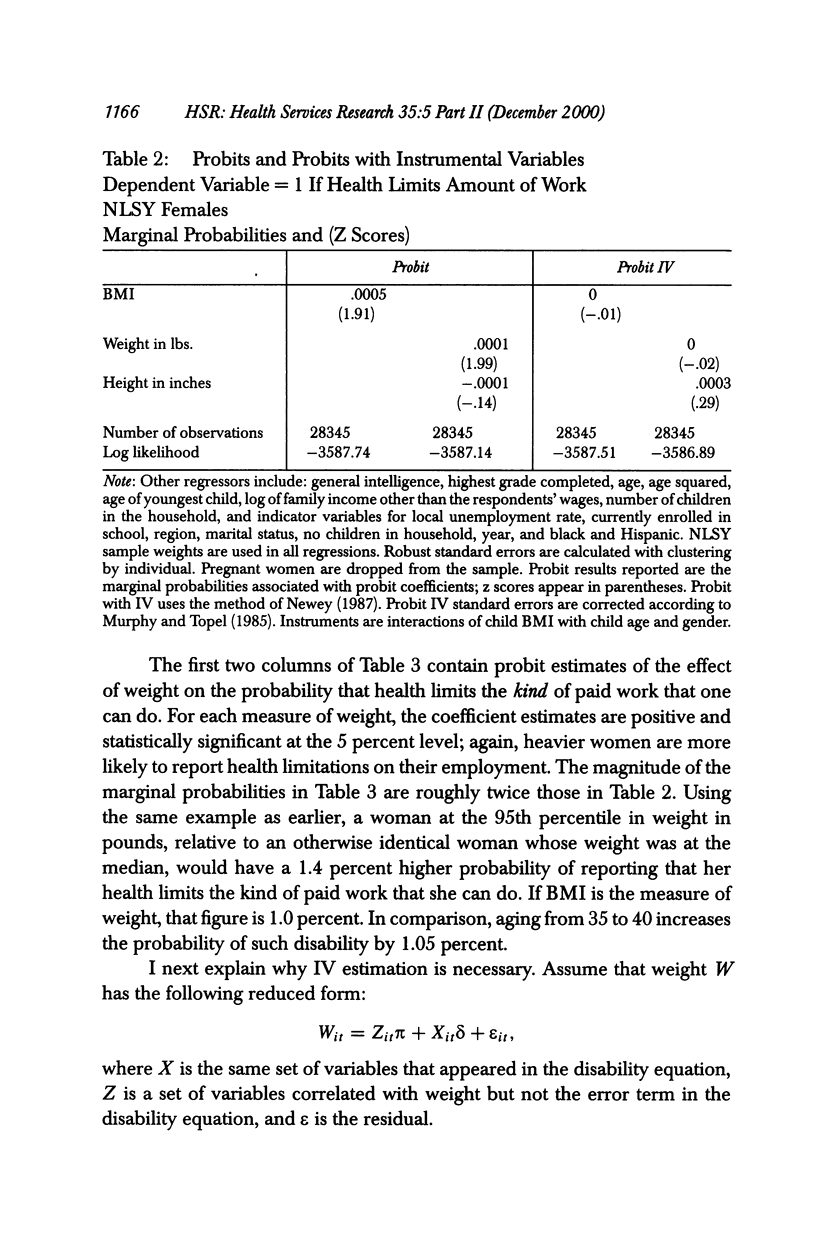
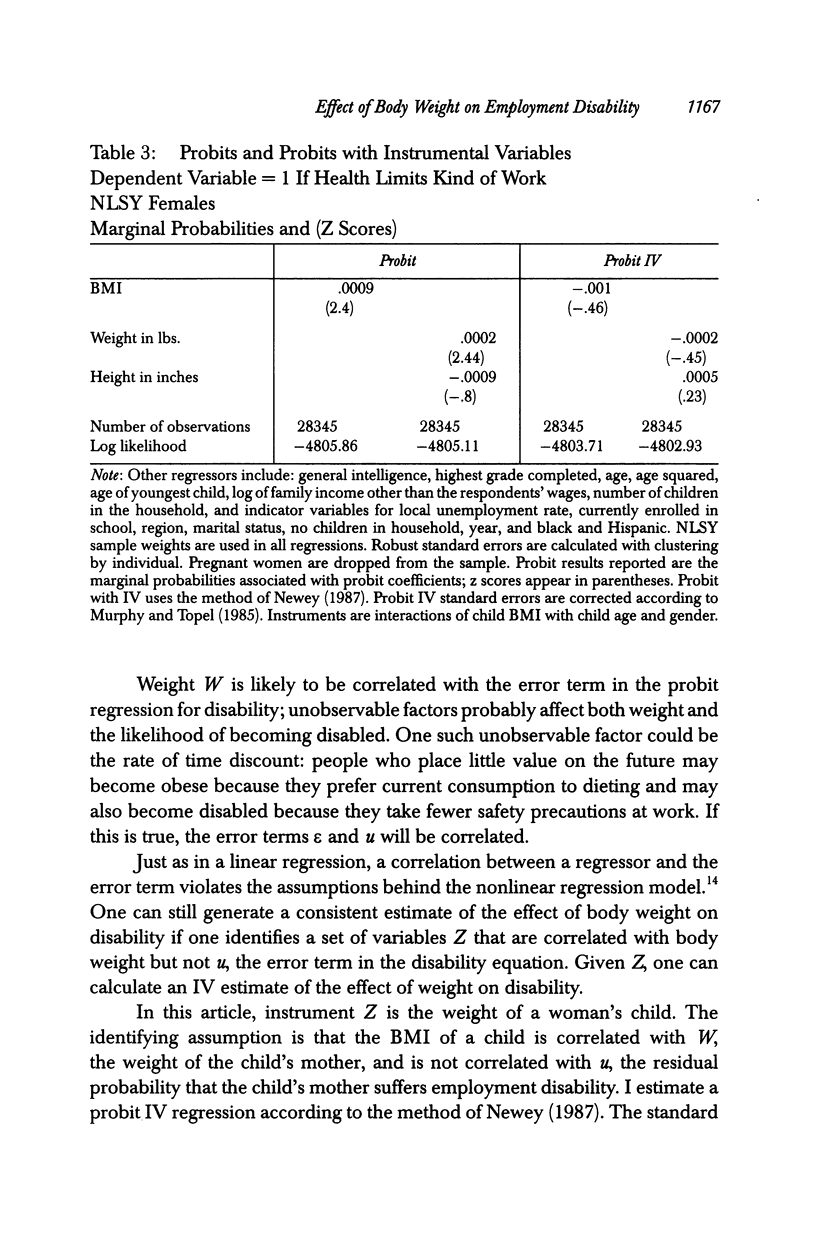
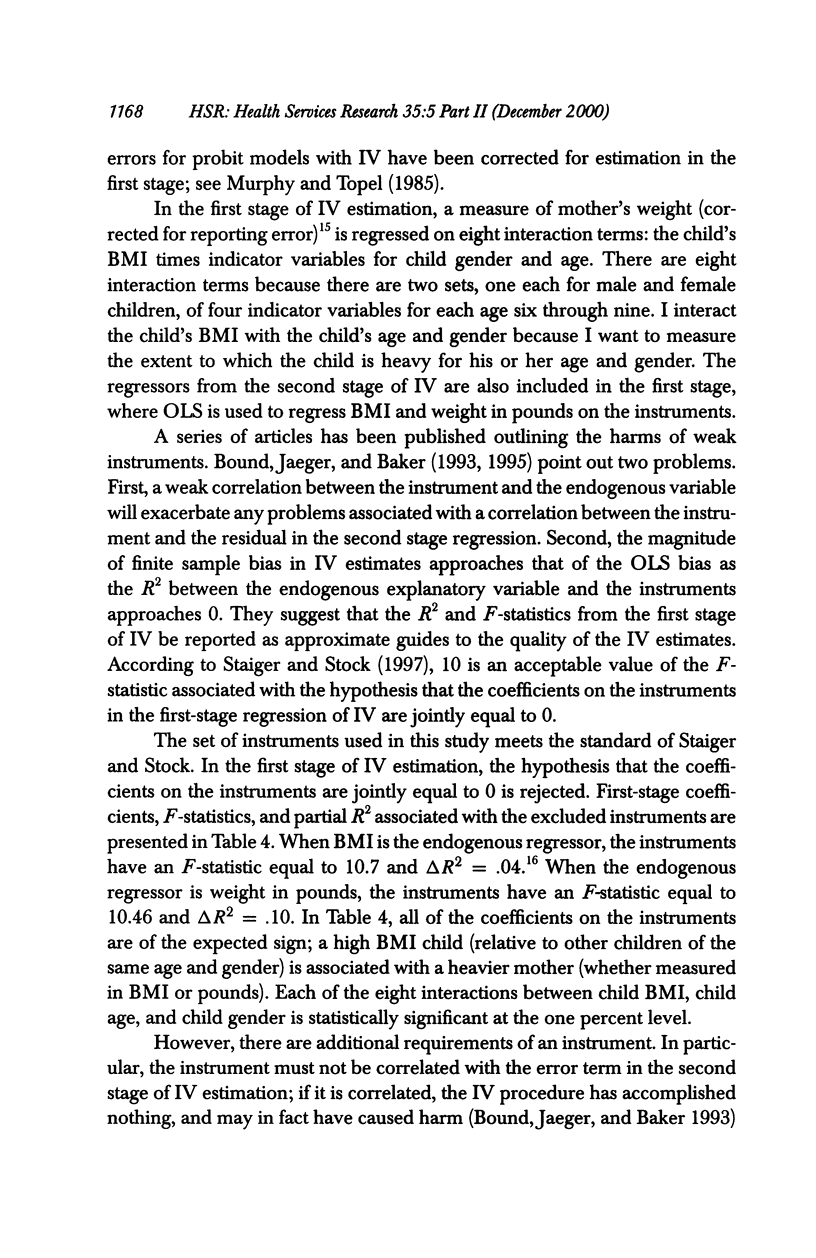





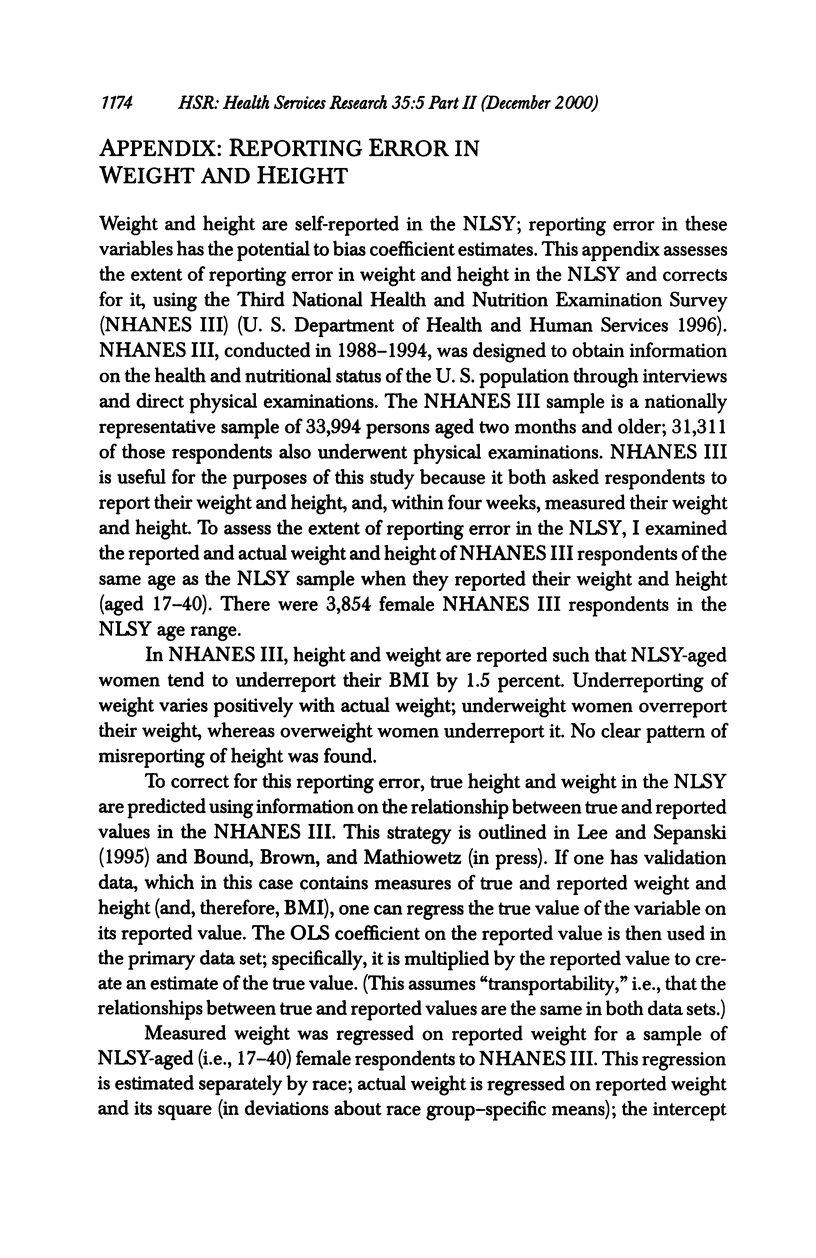



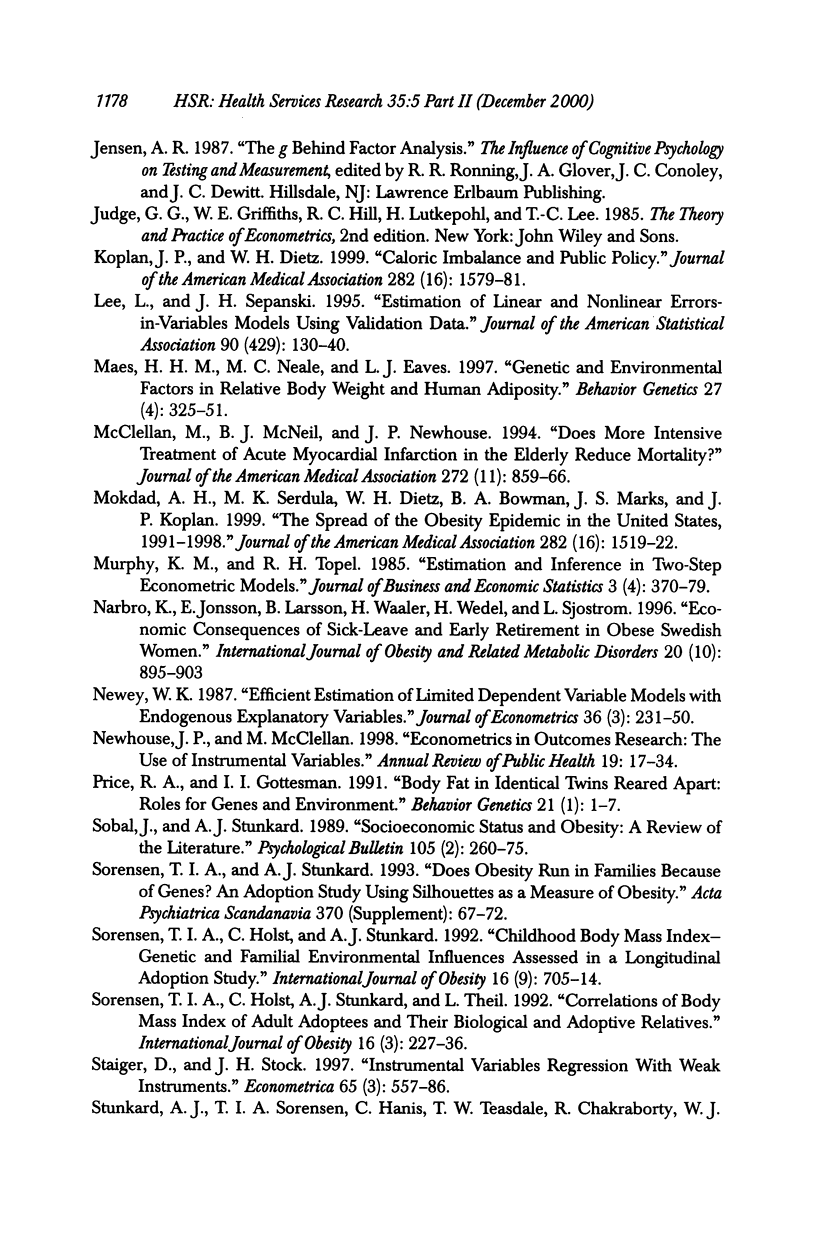
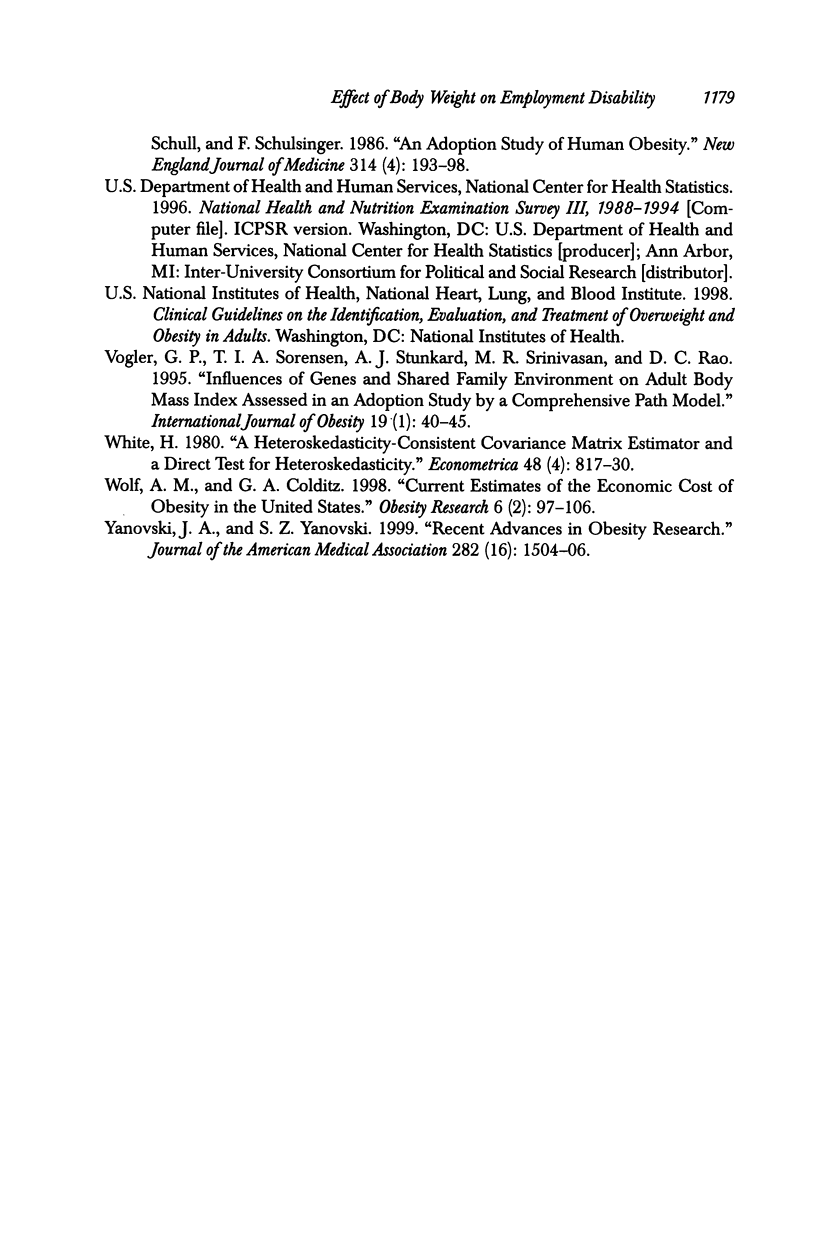
Selected References
These references are in PubMed. This may not be the complete list of references from this article.
- Flegal K. M., Carroll M. D., Kuczmarski R. J., Johnson C. L. Overweight and obesity in the United States: prevalence and trends, 1960-1994. Int J Obes Relat Metab Disord. 1998 Jan;22(1):39–47. doi: 10.1038/sj.ijo.0800541. [DOI] [PubMed] [Google Scholar]
- Grilo C. M., Pogue-Geile M. F. The nature of environmental influences on weight and obesity: a behavior genetic analysis. Psychol Bull. 1991 Nov;110(3):520–537. doi: 10.1037/0033-2909.110.3.520. [DOI] [PubMed] [Google Scholar]
- Koplan J. P., Dietz W. H. Caloric imbalance and public health policy. JAMA. 1999 Oct 27;282(16):1579–1581. doi: 10.1001/jama.282.16.1579. [DOI] [PubMed] [Google Scholar]
- Maes H. H., Neale M. C., Eaves L. J. Genetic and environmental factors in relative body weight and human adiposity. Behav Genet. 1997 Jul;27(4):325–351. doi: 10.1023/a:1025635913927. [DOI] [PubMed] [Google Scholar]
- McClellan M., McNeil B. J., Newhouse J. P. Does more intensive treatment of acute myocardial infarction in the elderly reduce mortality? Analysis using instrumental variables. JAMA. 1994 Sep 21;272(11):859–866. [PubMed] [Google Scholar]
- Mokdad A. H., Serdula M. K., Dietz W. H., Bowman B. A., Marks J. S., Koplan J. P. The spread of the obesity epidemic in the United States, 1991-1998. JAMA. 1999 Oct 27;282(16):1519–1522. doi: 10.1001/jama.282.16.1519. [DOI] [PubMed] [Google Scholar]
- Narbro K., Jonsson E., Larsson B., Waaler H., Wedel H., Sjöström L. Economic consequences of sick-leave and early retirement in obese Swedish women. Int J Obes Relat Metab Disord. 1996 Oct;20(10):895–903. [PubMed] [Google Scholar]
- Newhouse J. P., McClellan M. Econometrics in outcomes research: the use of instrumental variables. Annu Rev Public Health. 1998;19:17–34. doi: 10.1146/annurev.publhealth.19.1.17. [DOI] [PubMed] [Google Scholar]
- Price R. A., Gottesman I. I. Body fat in identical twins reared apart: roles for genes and environment. Behav Genet. 1991 Jan;21(1):1–7. doi: 10.1007/BF01067662. [DOI] [PubMed] [Google Scholar]
- Sobal J., Stunkard A. J. Socioeconomic status and obesity: a review of the literature. Psychol Bull. 1989 Mar;105(2):260–275. doi: 10.1037/0033-2909.105.2.260. [DOI] [PubMed] [Google Scholar]
- Stunkard A. J., Sørensen T. I., Hanis C., Teasdale T. W., Chakraborty R., Schull W. J., Schulsinger F. An adoption study of human obesity. N Engl J Med. 1986 Jan 23;314(4):193–198. doi: 10.1056/NEJM198601233140401. [DOI] [PubMed] [Google Scholar]
- Sørensen T. I., Holst C., Stunkard A. J. Childhood body mass index--genetic and familial environmental influences assessed in a longitudinal adoption study. Int J Obes Relat Metab Disord. 1992 Sep;16(9):705–714. [PubMed] [Google Scholar]
- Sørensen T. I., Stunkard A. J. Does obesity run in families because of genes? An adoption study using silhouettes as a measure of obesity. Acta Psychiatr Scand Suppl. 1993;370:67–72. doi: 10.1111/j.1600-0447.1993.tb05363.x. [DOI] [PubMed] [Google Scholar]
- Vogler G. P., Sørensen T. I., Stunkard A. J., Srinivasan M. R., Rao D. C. Influences of genes and shared family environment on adult body mass index assessed in an adoption study by a comprehensive path model. Int J Obes Relat Metab Disord. 1995 Jan;19(1):40–45. [PubMed] [Google Scholar]
- Wolf A. M., Colditz G. A. Current estimates of the economic cost of obesity in the United States. Obes Res. 1998 Mar;6(2):97–106. doi: 10.1002/j.1550-8528.1998.tb00322.x. [DOI] [PubMed] [Google Scholar]
- Yanovski J. A., Yanovski S. Z. Recent advances in basic obesity research. JAMA. 1999 Oct 27;282(16):1504–1506. doi: 10.1001/jama.282.16.1504. [DOI] [PubMed] [Google Scholar]


